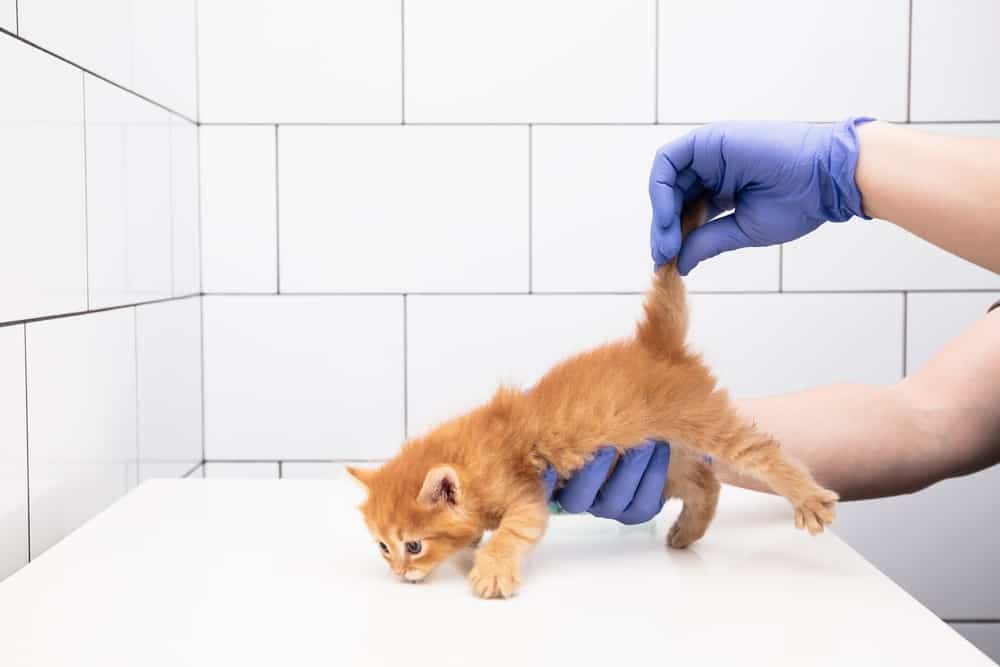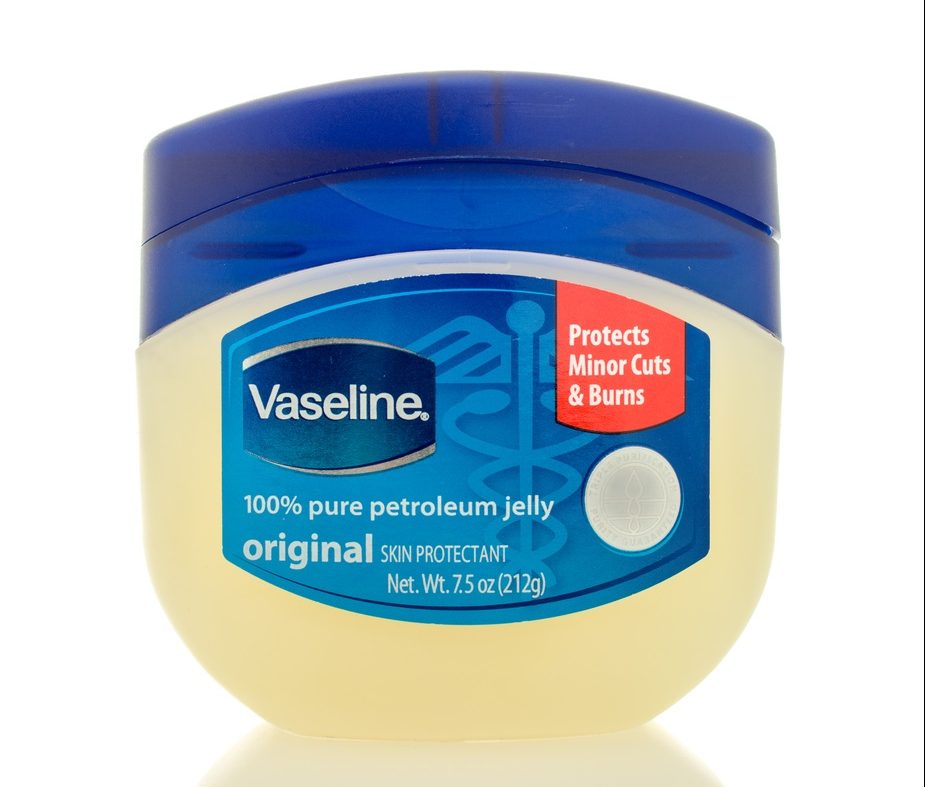
I love looking at my cat’s tail. It is long, fluffy and he likes wrapping his tail around my leg when I’m home.
On the flip side of things, his rather long tail has gotten into a few incidents that left me running around the house like a headless chicken or feeling gravely remorseful about causing him pain.
Even though cats are quite resilient, noticing that your cat’s tail is bleeding is indeed a cause for concern.
A bleeding cat’s tail can be caused by an open wound, a broken cat tail or any form of trauma that can cause tail injuries. It might not possible to always treat the wound at home and some cats will require surgery or medical attention to prevent further deterioration.
In this article, we will take a closer look at the possible causes of cat tail injuries and what you should do about them.
Why Is Your Cat’s Tail So Important?
Your cat’s tail is actually an extension of its spinal column which consists of between 18-23 vertebrae.
The size of the vertebra goes from big to small as it approaches the tip of the feline tail.
Cats have 230 bones in their bodies and 10% of the bones can be found in your cat’s tail which makes it a rather important body part.
Your cat uses its tail to balance when walking or jumping as well as a tool for communicating how they feel. When your cat puffs up its tail, that’s usually a sign that it’s fearful or ready to strike out of aggression.
The tail is more than just an apparatus to swat you in the face when you’re irritating your cat.
Cat tails come in a variety of shapes and lengths. There are some cat breeds that have very long tails while there are some that have no tails at all.
What Are The Causes Of Tail Injuries In Cats?
It might come as a surprise to you but a tail injury in cats is a lot more common than you think.
As much as we try to prevent injuries from happening, it can seem like a futile task given the nature of cats.
Just like making sure your dog doesn’t eat something off the ground that’s dangerous.
Here are some common cat tail injuries.
Minor Abrasions
The occasional abrasion to your cat’s tail is probably the most common type of cat tail injury that you will face.
This can happen when your cat’s tail gets caught on a rough or sharp surface which can rip off the fur and expose the raw skin underneath.
It is painful for your cat and can result in some bleeding but it is a surface wound that can heal quite quickly with some cleaning up.
There was once when I didn’t realize that I was stepping on the fur of my cat’s tail. When he stood up and walked off, a big chunk of his fur was still under my feet.
Fractured Or Broken Tail
Given that there are so many bones in your cat’s tail, the chances of one of them breaking is very possible if the impact is strong enough.
If there is any damage to the tissue, there might be some noticeable bleeding as well.
The most common causes of a broken tail are:
- Car accidents
- Getting caught in the door or window
- Something heavy dropping on your cat’s tail
- Falling from a high platform
The severity of a fractured tail in your cat depends largely on which part of the tail is the fracture at.
If the fracture is at the tip, the vet might just let the tail heal on its own with minimal intervention. Although when fully healed, it can be slightly bent.
However, if the fracture is near the base of the tail, that is definitely more severe as the cat’s injury can result in nerve damage to the spinal column.
Deep Cuts Or Wounds
This is a more severe form of an abrasion that involves an open wound on your cat’s tail that is bleeding profusely.
In some serious cases, you can even see both the muscle and bone in the injured tail.
Shudders.
Such lacerations to your cat’s tail are often caused by a sharp object. Such as getting the tail caught on a floor fan or bite wounds.
Outdoor cats are more susceptible to getting into fights with other cats and animals. Not only can the bite wounds injure your cat’s body but there’s also a risk of getting a transmitted disease.
Please keep your cat indoors at all times.
I once fostered a community cat, called Lucky, that had a bad bite wound under its tail. Apparently, it got involved in a scuffle with a trespassing cat.
The vet managed to clean out the wound but I still had to squeeze out the abscess from under a tail for almost a week.
How Do You Treat A Bleeding Cat’s Tail?

Depending on the severity of your cat’s tail injury, you may or may not be able to treat the bleeding at home.
Can your cat still move its tail?
Does your cat look like it is in a lot of a pain?
If your cat has a minor abrasion on its tail, you can sanitize that area with some saline solution and keep it dry and clean.
However, if your cat’s tail has a deep cut, looks fractured or is bleeding profusely, you need to take your cat to the vet immediately.
The vet will need to do a deep clean if there’s a wound to prevent any further infection. An x-ray is also required to check if there are any broken bones.
Surgery might be required to correct a broken tail.
If your cat has a bad wound that is allowed to fester, the dead tissue can start to spread to other parts of its tail and body.
This is very dangerous as your cat can go into septic shock which is life-threatening.
The vet will also prescribe a course of antibiotics and pain medication to help your cat heal faster.
Can A Cat’s Cut Tail Heal On Its Own?
Most cat tail injuries can heal on their own if the wound isn’t too severe. Abrasions take just a few days to dry up and heal with some care.
But if your cat has to undergo surgery or has some serious to its tail, it can take quite a while before your cat is doing fine.
A tail pull injury can result in nerve damage in your cat. This can cause loss of sensation and urinary control.
There’s no telling when your cat can fully regain those functions but if it doesn’t happen within a month, chances are it will be a permanent issue.
Can I Put Vaseline On My Cat’s Wound?

I know of many pet owners that use vaseline on their pets. It can be applied externally on wounds or taken in small amounts to help with hairballs and constipation in cats.
Vaseline is made out of petroleum jelly which explains its soft and gooey texture. The refine petroleum jelly isn’t toxic to cats but I would caution about giving your cat as an oral supplement on a regular basis.
Vaseline works as a skin sealant to retain moisture in the skin and promote recovery.
If your cat has a minor wound, you can rub some vaseline on it for a few days until it gets better. Some even rub vaseline on their cat’s sore bums due to constipation or diarrhea.
It isn’t advisable to use vaseline on wounds that are severe or gaping as it can only make the injury worse.
These wounds require medical treatment at your vet in order to heal.
Nora is a passionate writer with a love for books, animals, and gardening.
Her writing is inspired by her two cats and a loyal dog, who serve as her muses, as well as the tranquility she finds in her garden.
With a knack for storytelling, Nora offers a unique blend of book recommendations, heartwarming animal tales, and gardening insights.
Whether you’re interested in paws, petals, or page-turners, Nora’s world is a treasure trove of engaging content.

